Mars: Are we nearly there yet?
To rocket engineers, the idea of transporting humans to Mars is a one colossal headache. Compared to inert satellites and probes, humans are highly unpredictable, needy and fragile. Radiation is our body's kryptonite; microgravity renders the bones thin and weak and if you broke a leg, it could take months to fix. These are just a few of the hundreds of problems scientists are grappling with when considering how they might send people to the rocky red planet. We'll be taking a closer look at some of those obstacles this week and asking if it's actually possible to get people to Mars. Plus, news that scientists have grown the first kidney from scratch in a petri-dish, how vitamin pills can make cancer spread, and what a 4500-year-old skeleton is revealing about our origins...
In this episode
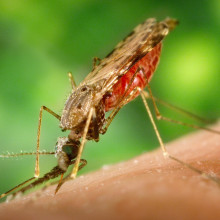
01:02 - Physiology Prize: Nobel for parasites
Physiology Prize: Nobel for parasites
with Khalil Thirlaway, University of Nottingham
This year's Nobel prize for physiology or medicine have revolutionized the 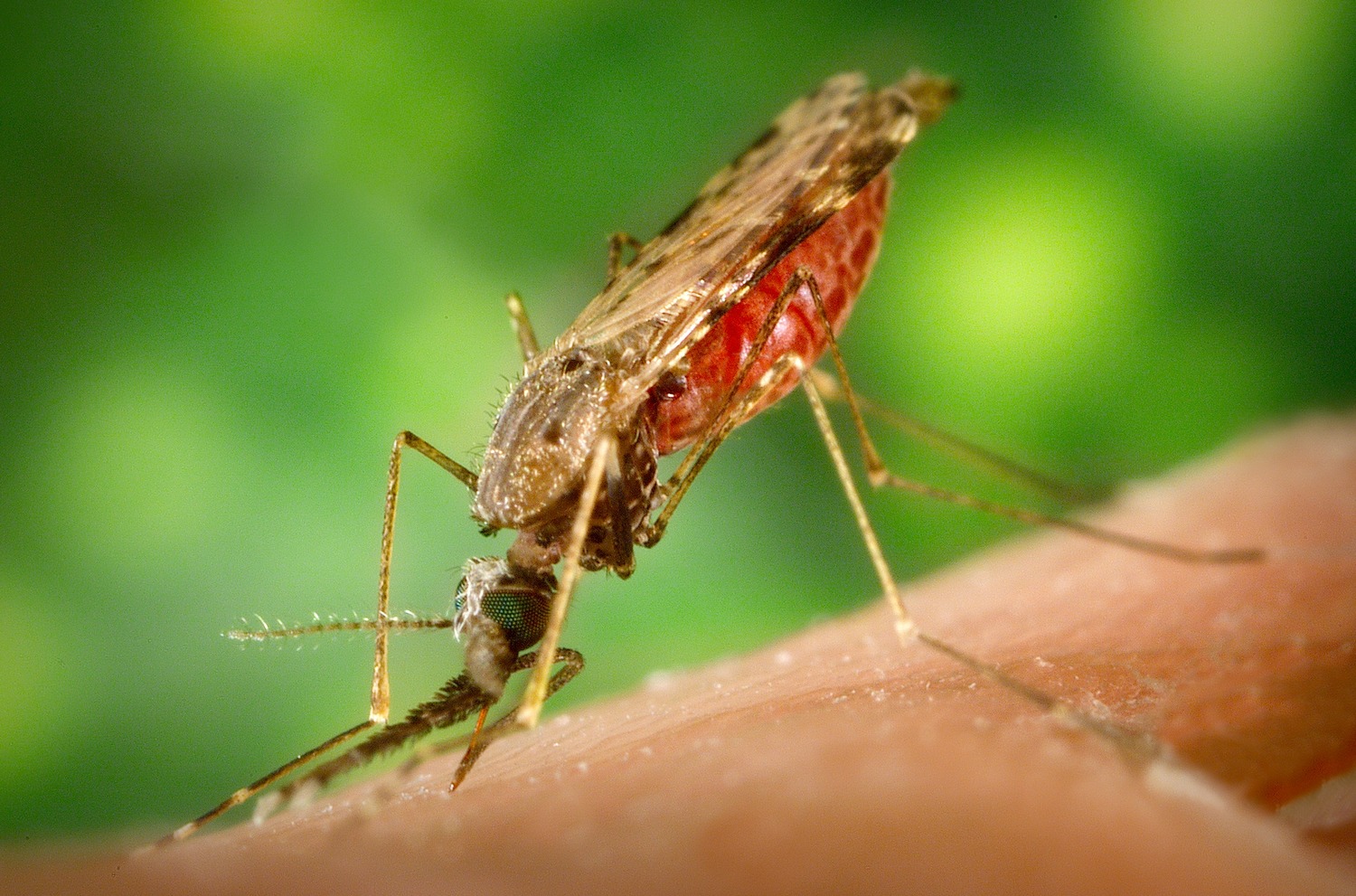 treatment of some of the most devastating parasitic diseases. Khalil Thirlaway is a parasitologist from Nottingham University and reports on the award-winning work...
treatment of some of the most devastating parasitic diseases. Khalil Thirlaway is a parasitologist from Nottingham University and reports on the award-winning work...
Khalil - Half of the prize goes to Chinese pharmacologist Tu Youyou who discovered the anti-malarial drug artemisinin by looking to the past for inspiration. She lived and worked in China during the cultural revolution of the 1960s and '70s when intellectuals including scientists were looked down upon as a danger to the revolution. This changed however with the onset of the Vietnam War. China's ally, North Vietnam asked the Chinese government for help because their troops were plagued by a particularly dangerous form of malaria which was resistant to the standard drug at that time, chloroquine. People have already screened hundreds of thousands of potential new drugs to no avail when Tu had the idea of searching back through ancient Chinese medical texts for possible cures. In a 1600-year-old text, she found a remedy which prescribed sweet wormwood as the treatment of intermittent fevers, a classic sign of malaria. After refining the method and even testing the drug on herself, she ended up with an effective cure for malaria which is still used today. It's called artemisinin after the Latin name for sweet wormwood. The other half of the Nobel Prize is shared equally between William C. Campbell and Satoshi Omura for the parasite killing drug, ivermectin. Omura was working in Japan, searching for new antimicrobials in a group of soil-living bacteria called Streptomyces which had already given us other medicines like the antibiotic streptomycin. He managed to isolate new strains of Streptomyces and grow them in his lab. Omura then sent the new bacteria to the USA for testing where Campbell investigated their possible medical properties. He found that one extract of Streptomyces avermitilis was effective against a wide range of parasites in animals. He purified the active component and modified it to be safer and more effective. The resulting drug, ivermectin is still one of the leading antiparasitic drugs in the market. In particular, it revolutionised the treatment of diseases caused by parasitic roundworms which were a major problem in the developing world. Between them, ivermectin and artemisinin have saved millions of lives and freed millions more from lifelong disease burdens.
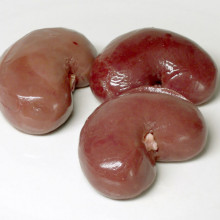
03:38 - Growing humans kidneys in a dish
Growing humans kidneys in a dish
with Professor Melissa Little, University of Queensland
For the first time, scientists from Australia have used stem cells to grow a new 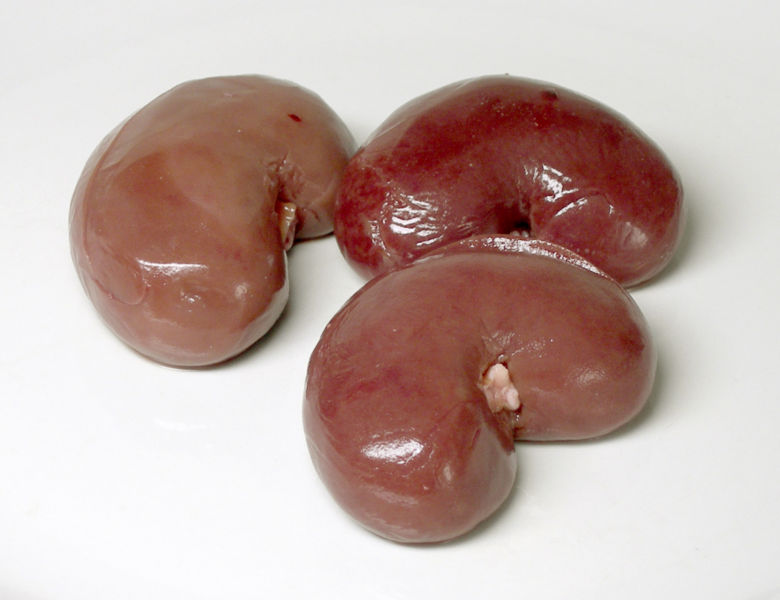 kidney in a dish. By controlling the conditions very carefully, and adding a sequence of growth factors to fool the cells into thinking they were back inside a developing embryo, they turned into kidney tissue. Melissa Little and her colleagues have manage to create the closest equivalent yet to a real kidney, as she explained to Chris Smith...
kidney in a dish. By controlling the conditions very carefully, and adding a sequence of growth factors to fool the cells into thinking they were back inside a developing embryo, they turned into kidney tissue. Melissa Little and her colleagues have manage to create the closest equivalent yet to a real kidney, as she explained to Chris Smith...
Melissa - You can take a stem cell, and we can make that from any cell in anybody's body and actually convince that cell to go through the whole process, as it would have in development, to make a little kidney in a dish. The key is that many people have kidney disease and we really want to find a way of regenerating kidney tissue. And so, we asked if stem cells could do this.
Chris - Why is it so difficult to persuade a stem cell to turn into an organ like a kidney?
Melissa - You have really got to convince it to make the specific stem cells that form that organ. The final kidney in an adult has more than 20 to 25 different types of cells and they all have to be formed in the right place in the right time. So, what we have to do is convince the cell that it's going through the normal processes it would go through during development. We have got to give it the right chemical signals. We have got to encourage the cells that are in there to talk to each other. It is sort of like a recipe - you have got to add the right factors at the right time, and give it the right amount of time and then amazingly, the cells that form, organise around each other to create the structure that we are looking for.
Chris - What did you start with and what did you end up with?
Melissa - We started with a stem cell that was made from a skin fibroblast. That is a cell that you can get from your skin, and then we added different factors in the dish. It takes about 3 weeks. The stem cell will start to make choices. It turns into one cell type that becomes another cell type and all of these are things that would normally happen in development. Then the cells talk to each other, and form the structure that we see eventually. So, it ends up being about a half a centimetre to a centimetre across, with about 100 little tubes in it, with blood vessels forming in a very complex little organ.
Chris - What's to stop you then growing instead of something of that scale a full size kidney and then just plumbing it into an individual?
Melissa - Technically, you should be able to make large, large numbers of these cells, but you can't keep structures that big alive without a blood supply, and we are doing this in a dish. So ultimately, it is going to be engineered so that we can provide it with a blood flow, and at the moment it doesn't have one exit for the urine which, of course, you have got to have because the urine has got to get out of your body somehow.
Chris - Can you surmount these problems of getting the blood supply and so on because at the moment, this is in a Petri dish? How would one scale this to become a bigger kidney?
Melissa - So, can I just say, it does have blood vessels. It just doesn't have blood flowing through it bur it has got to have a source of blood from somewhere. So yes, there are a couple of ideas, maybe if we just made large numbers of these cells and then put them back into a scaffold made from a kidney that has had all of its cells taken out, or actually bio print a structure of some sort. I guess we have in our heads this idea that you have got to build something as big as what you're replacing but dialysis, which is what a lot of kidney disease patients live on, only gives you 10 per cent kidney function. So, there is a lot of room for improvement over that.
Chris - How do you know that what you've created will actually work? How do you know this is functional tissue?
Melissa - We have tested some functions. Obviously, they don't make urine because you can't make urine unless you've got a force of blood flowing through your structure, and this is in a dish. But we have asked things like, are the cells in that organ starting to do some of the other functions that they normally do? For example, we've asked, there are some drugs that are actually really toxic to the kidney. So, we've put on those drugs and said, "Am I seeing this specific toxicity to that drug and are these kidneys are responding the way they would in an animal or in a human?"
Chris - You've therefore created not just a potential platform from which we can, in the future, develop full size kidneys but also, quite a useful test vehicle for actually trying out drugs in the future.
Melissa - Yes and I think that's actually very short term future. We hope to be doing this very shortly. It's not just using this as a little model of an organ to test for whether a drug is toxic. We can actually make a mini kidney basically to order. There are many patients out there with kidney disease that have mutations. We can make a stem cell from them, we can build a model of their kidney in a dish and actually use it to understand their disease and maybe develop treatments that are more channelled for their kidney disease.
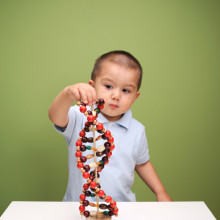
08:53 - Chemistry Nobel: Mapping DNA repair
Chemistry Nobel: Mapping DNA repair
with Emma Sackville, University of Bath
The Nobel Prize for Chemistry was jointly awared to Tomas Lindahl and Paul Modrich and Aziz Sancar for mapping how DNA repairs itself. Emma Sackville reports...
Emma - This year, the Nobel Prize for Chemistry was jointly awarded to Thomas Lindahl, Paul Mudrich, and Aziz Sancar for their into the mechanisms by which cells repair damaged DNA.
Up to the early 1970s, many people believed that DNA was a stable molecule. However, Thomas Lindhal showed that DNA is damaged at such a high rate that life should be impossible. It was this discovery which led him to conclude that cells must be able to repair that damaged DNA, and this in turn led him to identify one of the ways that cells can do this, in a mechanism known as basic excision repair.
Our second Nobel Laureate, Aziz Sancar was first drawn to repair mechanisms by his interest in how UV damage bacterial cells can regenerate when illuminated with blue light. This seemingly magical occurrence eventually led to his discovery of a mechanism called nucleotide excision repair which repairs DNA after a cell has been exposed to UV radiation. As well as damage from radiation and its inherent instability, errors in DNA can also be generated during replication. This is a process by which cells copy their DNA message and it happens millions of times a day in your body.
Paul Modrich who shares the prize money of eight million Swedish krona was instrumental in identifying the exact proteins responsible for so-called mismatch repair, which can correct 99.9 per cent of all replication errors. The detailed understanding which these scientists have uncovered has implications for cancer research as well as in expanding our knowledge of hereditary diseases, hopefully bringing us one step closer to treating them...
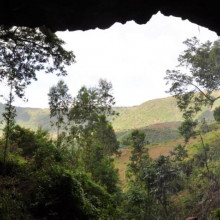
10:49 - DNA reveals 'into Africa' migration
DNA reveals 'into Africa' migration
with Dr Andrea Manica, University of Cambridge
Time to look back in time, as this week scientists at the University of Cambridge 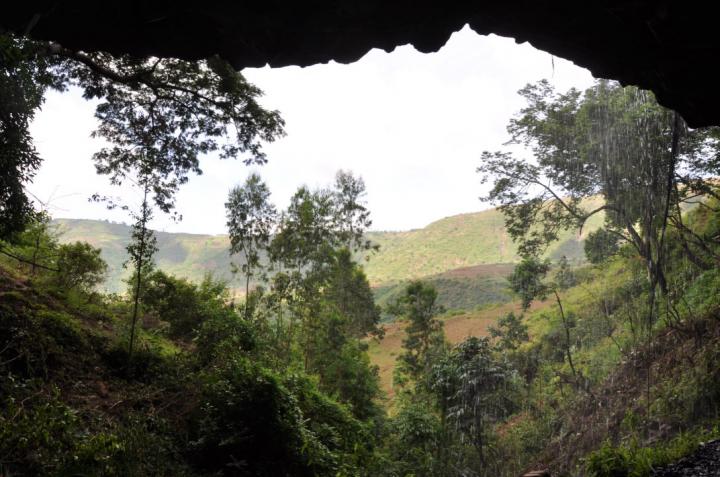 have successfully sequenced the genome of a 4,500 year old human discovered recently in Ethiopia. The results reveal how our early ancestors migrated out of and then back into Africa. Andrea Manica is one of the team and told Chris Smith about the work...
have successfully sequenced the genome of a 4,500 year old human discovered recently in Ethiopia. The results reveal how our early ancestors migrated out of and then back into Africa. Andrea Manica is one of the team and told Chris Smith about the work...
Andrea - He's called Mota, indeed. This is a gentleman that lived 4,500 years ago in the southern part of the Ethiopian highlands. He was definitely a hunter-gatherer and we found him in a cave that actually was already in use about 5,000 years ago, and then it was continuously used through time up to about 2,000 years ago as we saw people going from hunter-gatherers to pastoralist then to start producing their food.
Chris - Why was he in the cave? Had he died there?
Andrea - He was actually buried there. So, we find him buried faced down, probably bound as they used to do at that time with some of his tools that he would have used for hunting next to him.
Chris - Quite a dramatic finding. How did you manage to get DNA out of him because I would think that's quite a contaminated site, isn't it?
Andrea - Actually, he was under a very good layer of rock. So, the actual recovered remains were pretty much untouched, and we were already at that time working with the archaeologist, so we managed to get a really nice clean find.
Chris - Where did you get the DNA from? What part of his body?
Andrea - We managed to get it out of what is called the petrous bone which is this little bone that is behind your earlobe. It is just really hard and it preserves DNA really well. It just doesn't get the bacteria coming in and destroying the DNA.
Chris - How did you read the sequence?
Andrea - We have managed to sequence the whole genome, so we have actually got a complete blue print and then we were able at that point to really compare it to other Africans as well as other genomes from the rest of the world.
Chris - Why is this finding of this person at 4,500 years, why is this important in our understanding of modern humans i.e. as where we came from?
Andrea - Well, we came out of Africa as you mentioned before about 56,000 years ago, but we started having some inkling over the last few years looking at modern Africans that western Eurasians might have actually come back in numbers into Africa about 3,000 years ago. So Mota, by living 4,500 years ago, lived just before that time. So, it gives us a really nice reference for what people look like before this wave.
Chris - If one therefore looks at present day Africans and looks at their genome, have you got evidence in modern-day Africans then of - I don't want to use the word 'contamination' but their genome is stuffed full of genes mixed in from people who went out of Africa 50,000, 60,000 years ago, lived in Europe for a while, evolved there for a while and then came back into Africa and bred with those Africans again.
Andrea - We do. We don't quite know whether they made it all the way into Europe proper or maybe they just stopped around the near East Anatolia. But yes, we were quite surprised because even the furthest corners of Africa, like Western Africa or South Africa, actually have about 5 per cent of their genome dating back to this wave of western Eurasians.
Chris - This individual is in Ethiopia. It's quite high -that area. The best marathon runners in the world come from Ethiopia because they've got these genes that give them adaptation to tolerate those low oxygen conditions. Is the same true of this gentleman, Mota?
Andrea - It is indeed. He actually has those key adaptations that we found in Ethiopians right now. They were already there 4,500 years ago and probably, they had already been there for a long time. These were people who had to deal with this complex environment. They were hunter-gatherers, they had to chase down their preys at these altitudes. They were highly adapted for that life.
Chris - And now you have the sequence from Mota, what are you going to be able to do with it which is going to change our understanding of those migration patterns?
Andrea - Well, every time we tried to reconstruct what happened to humans as they come out of Africa, analysis for example of hybridisation with Neanderthal during that time of exit.
Chris - Mixing in with...
Andrea - Mixing in with Neanderthal. We always have to use an African reference. Until now, we always use this modern Africans as our references. So for example in the case of the mixing with Neanderthals, we're actually missing some of the mixing that happened because our reference was already - as you were saying before, had to be contaminated or at least already contain some of those Neanderthal genes.
15:14 - Antioxidants can cause cancer spread
Antioxidants can cause cancer spread
with Professor Martin Bergo, University of Gothenburg
New research has shown that taking antioxidants vitamin pills after a cancer 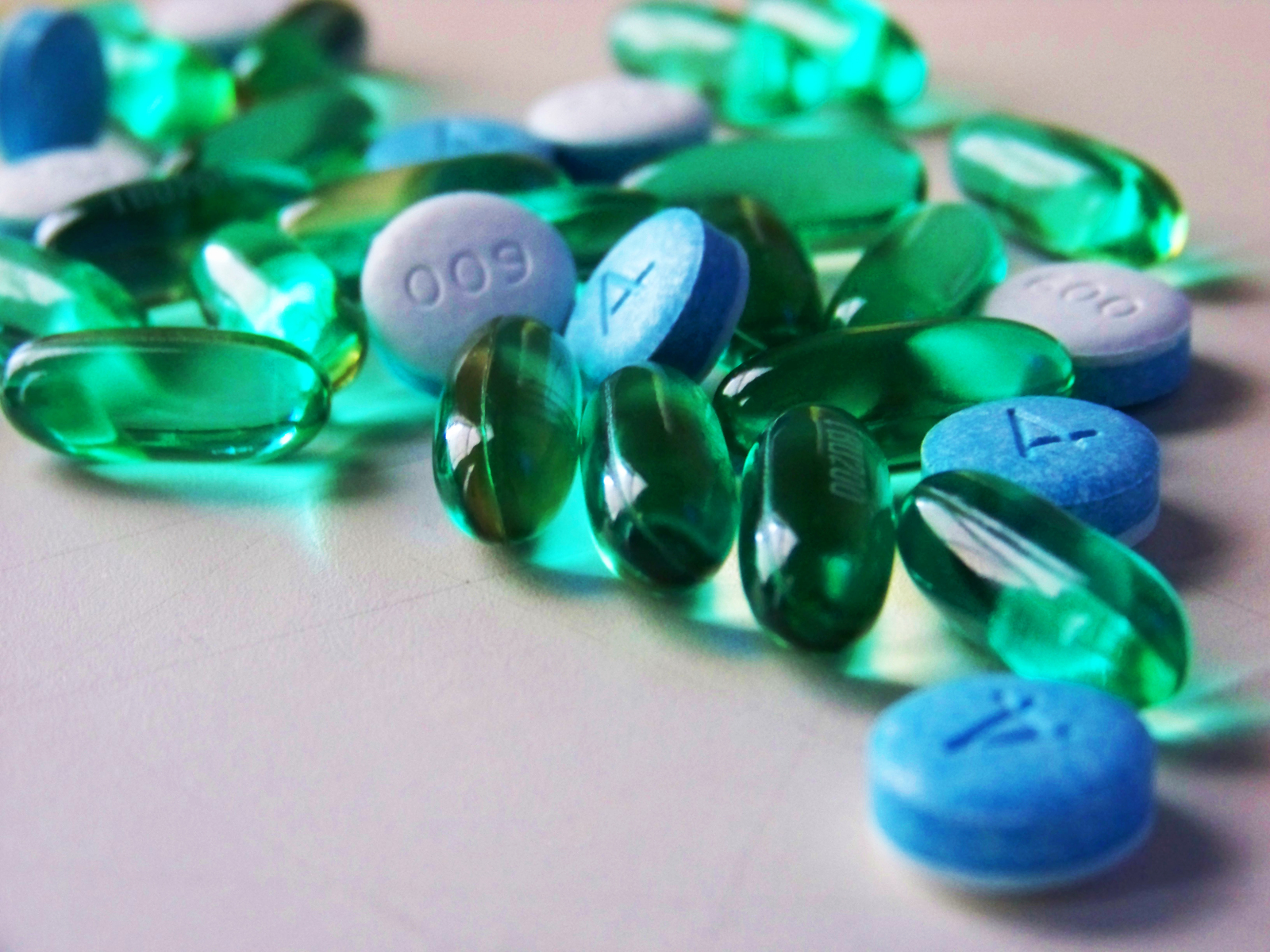 diagnosis might increase the chances of the disease spreading. Antioxidants, like beta-carotene and vitamin E, were believed to help protect our DNA from damage and reduce the risk of cancer. But clinical trials of antioxidant supplements suggests that, in fact, they might have the opposite effect - and increase the chances of dying from the disease. A new study on mice with the skin cancer melanoma, by Martin Bergo from the University of Gothenburg in Sweden, helps to explain why. Kat Arney finds out more...
diagnosis might increase the chances of the disease spreading. Antioxidants, like beta-carotene and vitamin E, were believed to help protect our DNA from damage and reduce the risk of cancer. But clinical trials of antioxidant supplements suggests that, in fact, they might have the opposite effect - and increase the chances of dying from the disease. A new study on mice with the skin cancer melanoma, by Martin Bergo from the University of Gothenburg in Sweden, helps to explain why. Kat Arney finds out more...
Martin - First, we studied what happens when we gave the antioxidants to the mice that already had small tumours on their skin. So, we gave them an antioxidant in the drinking water. At first, we were surprised because we didn't see any effect on the primary tumour. The number in sizes of primary tumours were unaffected. But then when we looked inside, it turned out that the antioxidant supplementations had doubled their frequency of metastasis.
Kat - So, that's cancer spreading through the body.
Martin - Yes, exactly and that's really the most dangerous part of most cancer's progression and in particular, the cell for malignant melanoma.
Kat - What do you think your results might mean for patients? Obviously, this is an animal study but are there lessons that we can take or is it a bit soon to say?
Martin - I don't think it's too soon to say. The first thing we did after we found this in the mice is that we looked at a large panel of human malignant melanoma cell lines and we found the same thing there, even when they were cultured, that the proliferation of these cells were their ability to divide did not differ when we gave them antioxidants. That's in analogy to the primary tumour not being affected in the mice. But then their ability to migrate and invade tissues was increased by antioxidants. So, this actually happens in human cells also.
Kat - How are the antioxidants having this effect? It seems a bit strange that something like that could be encouraging cells to grow and invade more?
Martin - I think the simplest way to put it is that antioxidants can protect healthy cells from free radicals, but they can also protect tumour cells from free radicals. Free radicals can limit a tumour cell's ability to proliferate and free radicals can limit the ability of malignant melanoma cells to metastasise. So, the antioxidant is helping the tumour cell.
Kat - Is there a message for cancer patients from this research, perhaps if they're seeing adverts for antioxidants or reading about them on the internet?
Martin - This is something that is very important to debate at this point. Research is showing that people who have just been diagnosed with cancer are more prone to take antioxidant supplements than the general population. So this is very important that they find out the potential risks of that. It's time to perhaps draw some general recommendations from that and suggest that cancer patients should not supplement their diet with antioxidants.
Kat - We do hear a lot about naturally occurring antioxidants in fruit and veg, and things like that. Does this mean that people shouldn't eat their "5 a Day", or avoid fruit and vegetables?
Martin - That's a very good question. It is important to note that we have studied antioxidant supplementation and we have chosen doses that you would be expected to get as a human if you were taking a supplement - a pill. But it's not excessive doses. You wouldn't have to take a lot of those pills. You would have to take a normal dose of an antioxidant supplement. So, there is no reason, at least from our studies, to suggest that antioxidants in the food would cause this effect.
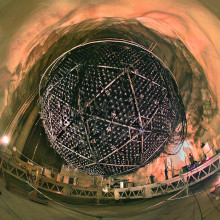
19:09 - Neutrino Nobel Prize for physics
Neutrino Nobel Prize for physics
with Dr Andrew Pontzen, University College London
Andrew Pontzen reveals who was awarded the Novel Prize for physics, and discusses what it really takes to win...
Andrew - The Nobel Prize in physics has this week been awarded to particle physicist Takaaki Kajita and Arthur McDonald.
So, for those of us who haven't yet managed to get that winning phone call from Sweden, what should we learn from this announcement? First, be patient. The work that has been rewarded this week was mainly carried out 20 years ago. It was all about working out what's going on with neutrinos - little tiny bundles of energy that are incredibly hard to detect.
The existence of neutrinos had been predicted in the 1930s to make sense of nuclear reactions. But they weren't actually first detected until 20 years later in the 1950s. The Nobel Prize committee finally got around to rewarding just that very first detection, a full 40 years later in the 1990s.
Second, it's great to be competitive. The work being recognised by this prize was carried out by two completely separate teams. Takaaki Kajita's team worked on the Super-Kamiokande experiment in Japan and reckoned the best way to study neutrinos was to use the stream of them produced by cosmic rays striking the Earth's atmosphere. Whereas Arthur McDonald's team working on the Sudbury Neutrino Observatory in Canada was instead studying neutrinos naturally produced by the nuclear reactions in the sun.
Both experiments saw hints that neutrinos suffer from a bit of an identity crisis. There are actually supposed to be three different types of neutrino, but the results from the two experiments only made sense if each neutrino changes its mind from time to time as to what type it is.
So, at any given moment, you could say, "Okay, this neutrino is an electron neutrino", but you look again and after a while it's turned into a tiny neutrino. It's all very strange and so it's the kind of thing that you wouldn't really believe from one experiment alone. But the real lesson is to make sure that you are the boss.
These are complicated experiments. The papers announcing the discoveries have around 200 authors on them but only the boss from each team has been recognised.
So, even if you are involved in the next Nobel winning discovery, chances are, it won't actually be you getting the prize...
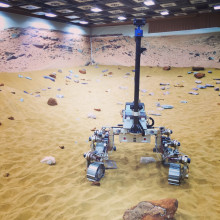
21:52 - The many challenges of getting to Mars
The many challenges of getting to Mars
with Dr Paul Meacham, Airbus Defence
This month, The Naked Scientists have launched a series of programmes that will  probe what it's going to take to send people to Mars. This week it's all about the journey - how we'll get there. To rocket engineers, just the idea of transporting humans to Mars is a serious headache. Compared to rovers or other inert satellites and probes, humans are highly unpredictable, needy and fragile. Radiation is our body's kryptonite; microgravity renders the bones thin and weak and if you broke a leg, it could take months to fix. These are just a few of the hundreds of problems scientists are grappling with when considering how they might send people to the rocky red planet. Graihagh Jackson ventured to the 'Mars Yard' at Airbus Defence to meet Paul Meacham to uncover exactly what we're up against...
probe what it's going to take to send people to Mars. This week it's all about the journey - how we'll get there. To rocket engineers, just the idea of transporting humans to Mars is a serious headache. Compared to rovers or other inert satellites and probes, humans are highly unpredictable, needy and fragile. Radiation is our body's kryptonite; microgravity renders the bones thin and weak and if you broke a leg, it could take months to fix. These are just a few of the hundreds of problems scientists are grappling with when considering how they might send people to the rocky red planet. Graihagh Jackson ventured to the 'Mars Yard' at Airbus Defence to meet Paul Meacham to uncover exactly what we're up against...
Paul - Mars is not the easiest place to get to. It's actually very demanding. Even just getting off the surface of the Earth is difficult because our gravity, it doesn't feel very strong to us. But it is an incredible force to overcome.
Graihagh - And then getting there I imagine is what, 9 months?
Paul - It is a very long time, yes. Nine months in cruise and of course, during that whole time, you're away from the Earth's protective layer. So, you're subject to the full elements of space. It's quite tricky to overcome that.
Graihagh - You've got a big job on your hands then.
Paul - We certainly do and that's why facilities like the Mars Yard are so important because it allows us to practice everything we're going to need to worry about when we get to Mars on Earth.
Graihagh - This is the weirdest place I've ever been. I don't know quite how to describe it.
Lost for words I was, but imagine a giant sand pit filled with bright orange sand and a mixture of real rocks and polystyrene boulders taped to the walls were vistas of Mars. Bar the lack of weightlessness, the scorching effects of radiation, and the bountiful levels of oxygen, I did feel like I was traipsing around Mars. This is the Mars Yard and no, it isn't a film set. It's where scientists like Paul test out prototypes of the ExoMars rover which will be sent to the red planet in 2018 for more scientific tests. The latest prototype is rather fondly referred to as Bruno.
Paul - Bruno has on him all the sensors the real rover will need to drive itself autonomously as the cameras and all the sensors in the wheels and that sort of thing. so essentially, we practice driving the rover by itself in this Mars Yard.
Graihagh - Can we take him out for a spin?
Paul - Yes, we certainly can.
Graihagh - Am I allowed to tread on the sand?
Paul - You can.
Graihagh - And away Bruno goes. Bruno looks like a giraffe. Instead of 4 legs, he has 6 wheels and the wheels resemble the sort of things you get on tanks. What strikes me is there's a huge number of things to consider here and a huge number of things that could potentially go wrong. This is just a rover that's about my height roughly. What about when we're sending humans to Mars?
Paul - You got to think about all the elements that the human is going to have to withstand and try to protect them as much as you can from it. So, one of the easiest examples is the launch phase. So, if you're strapped on top of a rocket, it's not a very pleasant place to be. You are getting blasted with lots of vibrations, lots of soundwaves. So, you've got to build your spacecraft to be able to withstand all those forces and not transmit too many of them to the actual passengers.
Graihagh - How do you test that?
Paul - Essentially, you've just got environmental test facilities. Where you have a big table that shakes the spacecraft. We even have a room where we do acoustic test. So essentially, we stick the spacecraft in there and then we blast it with soundwaves. It's not a particularly pleasant place to be because if you were a person in that room, when we were testing one of our spacecraft, you would be killed.
Graihagh - Death by soundwaves doesn't sound like a nice way to go and that's just the take-off. So, what's next? What else have you got to think about when you get out of the Earth's atmosphere and into space?
Paul - Probably, the main consideration is the radiation environment. As you say, we're leaving the protection of the Earth's atmosphere and you are then subject to the full force of solar wind and cosmic radiation. We're well aware of the effects of a radiation on a human body. It doesn't do nice things and you've got to fly through that for 9 months.
Graihagh - I'm assuming that's a huge concern because I know when in the Apollo missions that something like 3 days in space was the equivalent of 12 chest x-rays.
Paul - That's right. They flew through what we called Van Allen belts which are belts of radiation that surround the Earth. It's particularly a high energy environment. But yes, as you say, that was only 3 days and we're talking 9 months. So, the equivalent dose is much, much higher. And so, we're going to have to think about ways to protect the astronauts from that.
Graihagh - So, we're in space. We're now protected somehow against the radiation. What else are we battling against?
Paul - The next thing to think about is actually keeping your astronauts alive because you got to take everything with them that they're going to need. Most essentially, it's oxygen but oxygen is not a particularly pleasant gas. It's extremely flammable so you got to think about how you're going to store that very carefully. The famous Apollo 13 mission was caused by an exploding oxygen tank and it caused serious problems. At least in that case, they had half a chance of going back to Earth whereas if you're halfway to Mars and that happens, you'd have no chance of return at all.
Graihagh - If we do eventually overcome all these perils, what have we got to worry about when we're coming into the surface of landing?
Paul - Primarily, it's going to be the temperature range we're going to be experiencing. So, we have to qualify most things on the outside of our rover the temperatures between minus 130 degrees centigrade up to about 55. So, you're going to have to create an environment which is around room temperature and can withstand these massive temperature extremes we see on the planet and that's not easy to do.
Graihagh - No, quite. Do you have faith in your colleagues to engineer something clever that can do all these incredible things?
Paul - Yes, because I think we'd use something which is not dissimilar from what we use on the inside of the rover. The rover's main structure is called a bath tub and it has this space equivalent of double glazing in order to create a thermal barrier through which heat can't get in and heat can't get out. And then when you do that, you can create quite a habitable microenvironment within that cocoon.
Graihagh - So astronauts are going to be living in bathtubs.
Paul - Well I shouldn't have called it a bath tub should I. That's what you refer to the main structure of the rover.
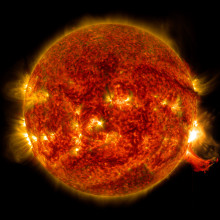
28:32 - Protecting astronauts from radiation
Protecting astronauts from radiation
with Dr Ruth Bamford, Science and Technology Facilities Council
One of the main obstacles we currently face in sending people to Mars is cosmic radiation. How will we protect the astronauts on board from these potentially deadly rays? Ruth Bamford from the Science and Technology Facilities Council thinks she may have the answer and it's not all that dissimilar from how the Earth protects us from radiation, as she explained to Chris Smith...
Ruth - Out in space, there are lots of small particles that are accelerated at very high energies and can penetrate deep within the body and cause lots of damage.
Chris - What sorts of particles are there, what are they called?
Ruth - Well, they're protons and electrons, the substance of the sun and they're accelerated by the explosions on the sun.
Chris - I suppose then that you get these particles, they're going at very high energies and given that they're very small, they're capable of penetrating the skin of say, your spacecraft and then if you happen to be in the way, they're going to go through your body and they could well interact with the cells in your body and act a bit like a microscopic missile.
Ruth - Yes, that's exactly right. They go through the whole of the spaceship and then they're able to penetrate deep inside the body just like microscopic bullets and can damage nerve tissue and cells and cause organ failure ultimately if they're in very high numbers.
Chris - Are you saying then that it's not such a risk of getting cancer because of damage to your DNA that you might not even live long enough to get cancer. If you had a big dose of these things, they could just wreck your cells and all your tissues and make you acutely unwell just during your space journey.
Ruth - Yes, that's right. They reckon that the general quiet time solar wind is sufficiently low for you to be able to survive a trip to Mars. So long as there isn't a big storm that produces a large of number of particles at very high energies and if that happens the human body can't deal with it and you get acutely sick, and potentially could die. But even acutely sick is threatening for the entire crew to be in that state.
Chris - Obviously, we can't take that chance. We want to come up with some kind of way of dealing with this. But given that the Earth is effectively a spacecraft, it's in orbit around the sun, the Earth must be being hit with these streams of particles all the time. So, why aren't we seeing them here at the surface?
Ruth - Well, we do see a small fraction of them but we have a couple of lines of defence. The first of which is the Earth's magnetic field that helps to slow down the particles and deflect a lot of them. Then after that, we've got the Earth's atmosphere which does a good job of cutting out a good fraction of the particles that otherwise would hit us.
Chris - What about when we put things into space then? If you look at the International Space Station for example, are the astronauts there subject to more radiation?
Ruth - The astronauts in the International Space Station encounter about 200 times the radiation we do on the ground, but the Space Station is still within the Earth's atmosphere, right at the edge. So, they are still partly protected by the Earth's magnetic field in any event. But even so, they do have like a panic room, which they have had to use on occasion when there have been big storms.
Chris - And such a room wouldn't be practical for our craft that we want to send to Mars?
Ruth - I would expect that a Mars ship would have an extra shielded room but it can be because you don't have the Earth's magnetic field and the Earth's magnetosphere protecting you that the energy and the particles you're encountering will go through that because we believe it goes through meters of concrete.
Chris - So that being the case, what approach can we take then in order to protect our astronauts so that if there is a storm, they're not fried in their spacecraft?
Ruth - What we would like to do is take a leaf out of nature's book and try and put an artificial magnetosphere around the spacecraft.
Chris - How do you intend to make the field?
Ruth - What we'd expect to do is make a very large loop of superconducting material and energise that if it's needed for a storm, using the power that the rest of the time is being used to power the spacecraft systems.
Chris - I see and you use the fact that you have a coil to create the field you need.
Ruth - Yes, that's right.
Chris - How strong would the field need to be because that doesn't sound like a very big solution? It sounds pretty simple really.
Ruth - Well, it's simple in concept but in fact, the interaction is immensely complicated. From our study, it's looking much more credible level of power for a manned spacecraft. So, you're talking about a few tesla for a magnetic field.
Chris - To put that into perspective, that's sort of roughly on par with the intensity that you get in a hospital MRI machine, isn't it?
Ruth - It's even less.
Chris - Once you create that field, what does it then do to the spacecraft in order to mean that these particles with formally the ability to penetrate meters of concrete are suddenly tamed?
Ruth - Well the magnetic field acts on the two charges in the solar wind. You have your negatively charged electrons which are very light, and you have a positively charged protons which are the hazard that you're concerned about. So, a magnetic field will pick up the electrons very quickly and redirect them because they're so light. The ions, the protons would normally find it quite difficult to follow the magnetic field lines. But they notice if they've lost their electrons because that sets up a space charge, an electric field and it's that electric field that then pulls back on the ions and will redirect them, hopefully away from the spacecraft.
Chris - One therefore thinks that were you to transplant this approach to an interplanetary vessel, it could work then.
Ruth - We're very hopeful that it could.
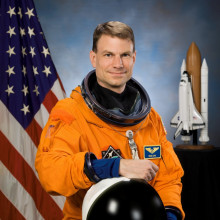
34:24 - What's it like to live in space?
What's it like to live in space?
with Dr Stanley G. Love, NASA Management Astronaut
What's life in space like for an astronaut? What do they eat, how do they sleep  and what about showering? NASA astronaut Stanley G. Love took Graihagh Jackson through his time in space, starting with take off...
and what about showering? NASA astronaut Stanley G. Love took Graihagh Jackson through his time in space, starting with take off...
Stanley - You get strapped in 2.5 to 3 hours before you launch. You'll get plenty of time to think about whether that was really a good idea.
Graihagh - What was going through your mind?
Stanley - Well, there are two sort-of astronaut's prayers where the standard one is 'I really hope I don't screw up' and not everybody admits but many people are also hoping they don't get blown up.
Launching from the ground to reaching orbit takes about 8 minutes. During that time, there are milestones that you're sort of checking off - places where you say, "Okay, from this point on, if we lose an engine, we're going to fly across the Atlantic and land in Africa whereas before that, if we lost an engine, we would've tried to turn around and land back in Florida." There's also a milestone that my commander read off to us over the headsets. He made a little congratulatory statement for us rookies on-board, congratulating us on making it to space and officially becoming astronauts. When the engines cut-off and you're floating in orbit, that's 40 per cent of the risk and your entire space mission has just been retired in those 8 minutes. So, you get a good feeling thinking, "This just got about twice as safe as it used to be when I was sitting on a pad 8 minutes ago." So, that's a great feeling. Floating in your straps is just amazing and then the next thought to hit you is, it is now time to get to work.
Graihagh - Paint me a picture of life in space. I imagine microgravity plays havoc on all sorts of things in terms of how you sleep but also how you eat and shower, and all that sort of thing.
Stanley - Yes, shower. Who said anything about showers?
Graihagh - Two weeks without a shower?
Stanley - Imagine turning off the gravity and turning on the shower. Water would go flying everywhere. So, if you want to take a bath, it's going to be a sponge bath. But you're right. daily life really has a lot of changes when you're in microgravity especially at first when it's disorienting. I mean, there's a few fine aspects especially after a couple of days, you'll get used to it. So, you can actually put your pants on both legs at the same time in microgravity, but getting into bed, setting up a bed takes a long time. you're setting up a sleeping bag basically that's attached to the wall or the floor, or the ceiling if you like. Changing clothes is hard, eating is hard. Most of our foods are in sort of packets and you kind of cut open a corner and kind of nibble or if it's a liquid stuff, you kind of suck the contents out. It just takes a long time to get anything done. Going to the bathroom can take half an hour especially the first couple of times. The biggest surprise on the whole flight for me was not during the flight but after landing. As your system gets used to being in gravity again, you can be very dizzy like your head is spinning. I didn't quite expect that. I expected some of the other effects to feel kind of weak, maybe sick to my stomach. I did not expect to be dizzy. But in general, we were very, very well prepared for our flight and folks who had been there came back and told us about their experiences so there were not very many surprises.
Graihagh - You're mentioning the effects of microgravity there and there's lots of talk about the effects on bone density and muscle wastage, was this something you encountered after 2 weeks after you returned back to Earth?
Stanley - Absolutely, but I was a bad astronaut and I did not do my exercise. But I had ample time to regret that when I came home. So, I lost 8 pounds of muscle, almost all out of my legs. If I went again, I would not blow off my exercise because it made a huge difference. And that was only 2 weeks. You can imagine if you were up there for 12 times longer than that, being up there for 6 months.
Graihagh - How long did it take you to recover those 8 pounds of muscle?
Stanley - Several months. I have this memory of being finished with the spacewalk waiting outside the airlock to come back inside and our shuttle's orbit took us up over the Pacific Ocean and across the western part of the United States and just having that immense tableau of scenery of all the world that I'd known growing up and having that just come rolling up underneath me as we were finishing that spacewalk and feeling good about it. That was a wonderful, wonderful experience and something I'll remember for the rest of my life.
Graihagh - Sounds beautiful.
Stanley - It is, I like to say and this is a strong statement coming from somebody with a background in astronomy that the Earth is the most interesting thing in space. So, I'm hoping that in the future, more and more people can see what it's like to be in orbit, look down at the Earth, see what it really looks like and observe our homes as a planet rather than just something you drive around to work and back every day. I think it will make us all better people to have that experience.
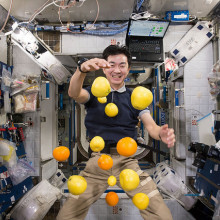
40:18 - Microgravity: the roadblock to Mars?
Microgravity: the roadblock to Mars?
with Mr Mark Wilson, Imperial College London
After Stanley G. Love spent two weeks in space without exercising, he lost 8lbs of 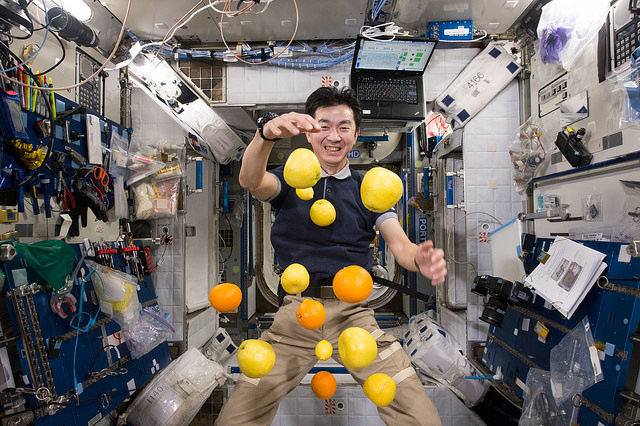 muscle mass in his legs alone. If we're set to go to Mars, astronauts would be travelling in microgravity for nine months. Could living without gravity be a major concern for our wouldbe Mars-bound astronauts? Neurosurgeon Mark Wilson thinks a long haul trip to the red planet could have some serious - but not insurmountable - health effects, as he explained to Kat Arney...
muscle mass in his legs alone. If we're set to go to Mars, astronauts would be travelling in microgravity for nine months. Could living without gravity be a major concern for our wouldbe Mars-bound astronauts? Neurosurgeon Mark Wilson thinks a long haul trip to the red planet could have some serious - but not insurmountable - health effects, as he explained to Kat Arney...
Mark - There are many effects. My area of research is what happens to the brain in microgravity and hypoxia. What happens is is that because you haven't got gravity pulling blood into your legs, you get this fluid shift and we think that the intracranial pressure rises. What's happening, we're finding in longer space missions now, the chronic changes that are occurring are actually causing another phenomenon which is known as VIIP or Visual Impairment and Intracranial Pressure in space where the astronauts are losing peripheral vision and this is also a long term problem that could be an issue in a mission such as one to Mars.
Kat - So basically, all their bloods kind of going into their head and the fluid has got to go somewhere.
Mark - Yeah. I think what's happening is that you've got this reduced ability to drain venous blood. If you're sitting here now, you're putting about a litre of blood into your head every minute and that litre of blood has to get to get out every minute as well. When you have not got gravity helping that and you can't drain blood quick enough.
Kat - So, that's what's going at the head-end. So, what about further down, the rest of the body, the skeleton and the muscles? How does this low gravity environment of a spaceship affects them? What's going on at a physiological level?
Mark - Well, because they aren't exercising in a normal way, and by that, I mean, when you normally exercise, you're walking or you're running, you have constant impact exercise, that's what helps bone turnover effectively. Because they haven't got that that they lose bone mineral density and the other thing they haven't got is gravity pulling blood into the tissues. So even when people have exercised in space, for example, just running on a treadmill with braces to hold them on it, they still lose bone mineral density and muscle mass because although they've got impact exercise, they haven't got the gravitational force pulling blood into their legs. So, those are the two things; It's blood flow and impact exercise that are required to maintain bone mineral density and muscle mass.
Kat - How does this affect the body because presumably, if things like muscle and bone are starting to breakdown, the components of those have to go somewhere?
Mark - Yeah and you gradually excrete the protein out and you gradually lose the calcium although it does differ in different parts of your body. So, the work that I was previously involved with was looking at, what happens to your head more than anything else. Your cranium actually tends to deposit more bone rather than lose it. So, it's not all loss. It's depending on where it is in your body that's changing.
Kat - So for example on our hypothetical nine month trip to the red planet going to Mars, we've already heard that just after a reasonably short trip into space, Stanley Love, he lost about eight pounds of muscle. How much would the average astronaut expect to lose?
Mark - Well, there's different studies, but on average, the studies seem to show that people lose between one per cent and 5 per cent of their bone mineral density per month that is during microgravity. That's quite a lot if you're going to be spending nine months traveling somewhere. We don't know whether it plateaus off and some of the evidence from the International Space Station suggests that it does. But if it's not going to plateau off, then you're obviously going to have quite a lot of loss before you arrive.
Graihagh - You can almost imagine - is someone just going to basically turn into a jellyfish? What would be the ultimate endpoint for this?
Kat - We don't really know but it's not really the fact that they might have a little bit of loss that will be okay. It's more of an emergency situation when they arrive at wherever they're going. You need to also maintain bone mineral density and muscle so you can run away or move and do the appropriate things even in the relatively reduced gravitational environment. So from a safety point of view, although people say if it's a one-way trip, does it matter or something like that? It does matter because actually, you may well need to do stuff when you get there.
Kat - So for example, just getting down from your rocket onto the surface of Mars, would there be a risk if you tripped and fell over you would just snap a bone like that?
Mark - We don't really know but that is a perceivable risk. And so, there's been a lot of work looking at countermeasures to try and minimise this bone mineral density and muscle mass changes.
Kat - What sort of things have you looked at? What sort of approaches can people take?
Mark - If you look at the old space lab missions and some of the stuff from the '80s and '90s, people used to exercise in space with braces over their shoulders holding onto a treadmill. That didn't really prevent bone mineral density and muscle mass changes because, although you're getting the impact of exercise again, because you haven't got blood being pulled into your legs, you still lost bone mineral density and muscle mass. So, some of the countermeasures that are now being suggested are things like lower body negative pressure where you sit in a chamber that sucks air out from around your legs as well as having a treadmill on the bottom, and then you've got effectively an artificial gravitational force across you, pulling blood into your legs and you've got impact stress. That seems to prevent bone mineral density and muscle mass changes. The problem with that is that it requires a bit of power and also constant vibrations which would affect things such as crystal experiments or other stuff that might be going on. And then another measure such as interlimb resistance devices where you use one leg as a resistance device against the other. There's things such as human power centrifuges where effectively, two bikes are set apart opposite each other and by exercising against each other, you can create a gravitational force as you spin around. But all these are quite big things. If you've got a roughly small craft during such a mission, it's going to be difficult to plan it into that. So there's lots of work going in this area.
Kat - What about things like drugs and I'm sure I remember seeing a study about looking at how bears hibernate because they lose their muscle mass when they hibernate, but then they kind of get better again? What could we learn about maybe tweaking physiology with drugs or chemicals to help reduce these side effects?
Mark - It's interesting you say about when bears hibernate but even if you just lie down for a prolonged period, you lose bone mineral density and muscle mass. It happens in humans as well. We don't really know enough at the moment in terms of whether we can optimise things with hormonal treatments or with additional calcium and vitamin D and things like that. It does seem to be that really, to maintain bone mineral density and muscle mass, you have to be using them. And so, as drugs might offer a small benefit, it is unlikely to be the sole solution.
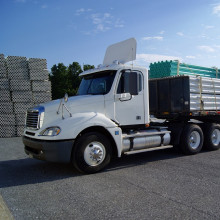
47:16 - What wind speed will blow my truck over?
What wind speed will blow my truck over?
This time, Charis Lestrange tackles Marco's question with Zephyr Penoyre, a PhD student at Columbia University, New York...
Marco - I was driving my truck pulling a 53-foot trailer and it blew over due to a strong wind. I was wondering if you could work out the wind speed so that I know when to stop driving.
Charis - Sounds like we've got some maths to do. I asked Zephyr Penoyre, a PhD student at Columbia University, New York, to talk me through it.
Zephyr - So, there's two things to think about here - how much force is needed to tilt the truck and how far you can tilt it before it topples over.
Charis - So how does it create a force?
Zephyr - Well air still have mass and density. It's pretty small, much less than water or metals, which is good because otherwise, humans would all fall into the atmosphere. But this means that when the air is moving, it has momentum. Imagine putting your hand in a jet of water. as it hits your hand and slows down, you experience a force as the momentum of the water is transferred to your hand. So, if we stop a fast-moving air, for example, when it hits a side of something solid like a lorry, it will transfer momentum and there'll be a force pushing the lorry over.
Charis - But what determines how fast the wind needs to be moving to tip the lorry over?
Zephyr - The wind isn't the only force. There's also gravity pulling down on the lorry, resisting the urge to tilt. For the lorry to start to lean over, the wind needs to be fast enough that enough momentum is transferred to overcome gravity. Once the wind gets strong enough, the lorry will shift over onto two wheels. If the wind keeps blowing at the same speed, the lorry will topple. But if the wind drops off a little bit so that the forces match again, the lorry can stay on two wheels indefinitely, which is very cool, but it will be a little bit terrifying to see it coming along the motorway.
Charis - Wow! I imagine lorries driving on two wheels must be very unstable. Surely, they fall over eventually?
Zephyr - Only if the wind speed increases again. Every object has a centre of mass and as long as that is over its base, it won't topple. For most people, theirs is just behind their belly button. Think of your feet as a base. If your belly button sits above that base, your stable. But as soon as you lean out, you start to fall. That's actually what walking and running is. Overbalancing so that you start to fall in a direction and then moving your legs fast enough to keep from toppling over. As soon as the wind has tilted the lorry enough that its centre of mass is on the wrong side of the two wheels, then gravity is now pulling the lorry in the same direction as the wind is pushing and it will topple over. Probably, quite spectacularly.
Charis - If you're a lorry driver, what could you do to stop your truck blowing over?
Zefe - Well if you can, fill it with stuff. The more you're carrying, the heavier the truck is and the larger the force, and then higher the wind speed is needed before you topple over. For an empty lorry like the one Marco was driving, you can drive in winds up to about 60 miles per hour. But if you increase the weight with cargo then you can manage much higher winds.
Charis - So, the speed you travel at isn't so relevant. It's how much your truck weighs and how large an area it presents to the cross winds that matters. Thanks to Zephyr Penoyre for helping me answer Marco's question.
- Previous Engineering life
- Next What wind speed does it take to tip a lorry?










Comments
Add a comment